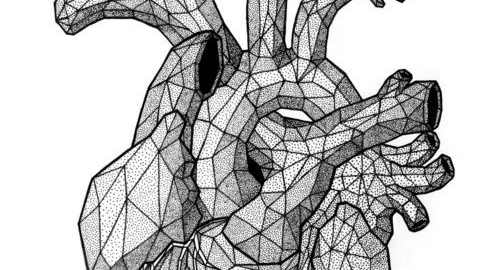Welcome to the Hiesinger Lab
Cardiothoracic Surgery Research
The Hiesinger Lab is home to a collaborative research environment comprised of teams of clinicians, engineers, and scientists that work to create translatable solutions to clinically relevant cardiovascular problems. Led by Dr. William Hiesinger, the lab uses computational protein design, computational fluid dynamics, molecular biology, bio-medical devices, and machine learning methods to tackle key challenges in treating heart failure.
Machine Learning Echocardiography
We recently developed a novel, 'radiomics based' echocardiography analysis platform using a combination of supervised and unsupervised machine learning techniques. We use this platform to characterize subtle myocardial motion abnormalities, and use this to predict post-operative complications in LVAD patients, stratitfy patients with pulmonary artery hypertension, and derive long-term survival estimates using just a single ECHO video.
Computational Fluid Dynamics
The Hiesinger Lab is working in collaboration with the Marsden Lab, to develop methods to model blood flow through the left ventricle of the heart. These methods are being used to study hypertrophic obstructive cardiomyopathy or HOCM, and patients who develop aortic valve disease when on long term LVAD support. Our goal is to use CFD to understand hemodynamic changes that are otherwise difficult to study by traditional imaging modalities, and use this to optimize surgical techniques.
Chemokines and Cardiac Recovery
We use surgical myocardial infarction models to develop a mechanistic understanding of how proteins secreted by cells trigger recovery in an otherwise failing heart. We use MRI and Echocardiography to evaluate functional recovery in damaged hearts. With the help of advanced microscopy techniques and single-cell sequencing technologies, we hope to understand which cells primarily respond to cardiac recovery and how they differ in untreated hearts.
Datasets and Resources
We maintain the Stanford LVAD institutional dataset, and are currently curating the largest multi-centre heart failure echocardiography dataset in the world.
Our wet-lab resources include a single cell RNA sequencing dataset of 20,000 cardiac intersitital cells from mouse hearts exposed to a variety of treatments following a heart attack.
We have four dedicated servers on the Stanford Sherlock high performance computing cluster for all our computational research.
Protein Engineering for Heart Failure
We work with the Possu Huang lab, to computationally design and then synthesize custom protein molecules that can serve as therapeutic agents to treat and prevent the progression of heart failure in terminally damaged hearts. We combine cutting edge 'in-silico' methods of simulating and modelling macromolecular structures, with 'in-vitro' evaluation of computationally derived structures on genetically engineered BRET-GPCR cell ines.
Software and Code
Coming Soon: Code for each of our projects, and custom in-house scripts for single cell sequencing pipelines are additionally available for reuse. We will also be releasing our core ECHO artificial intelligence platform on our lab GitHub.
